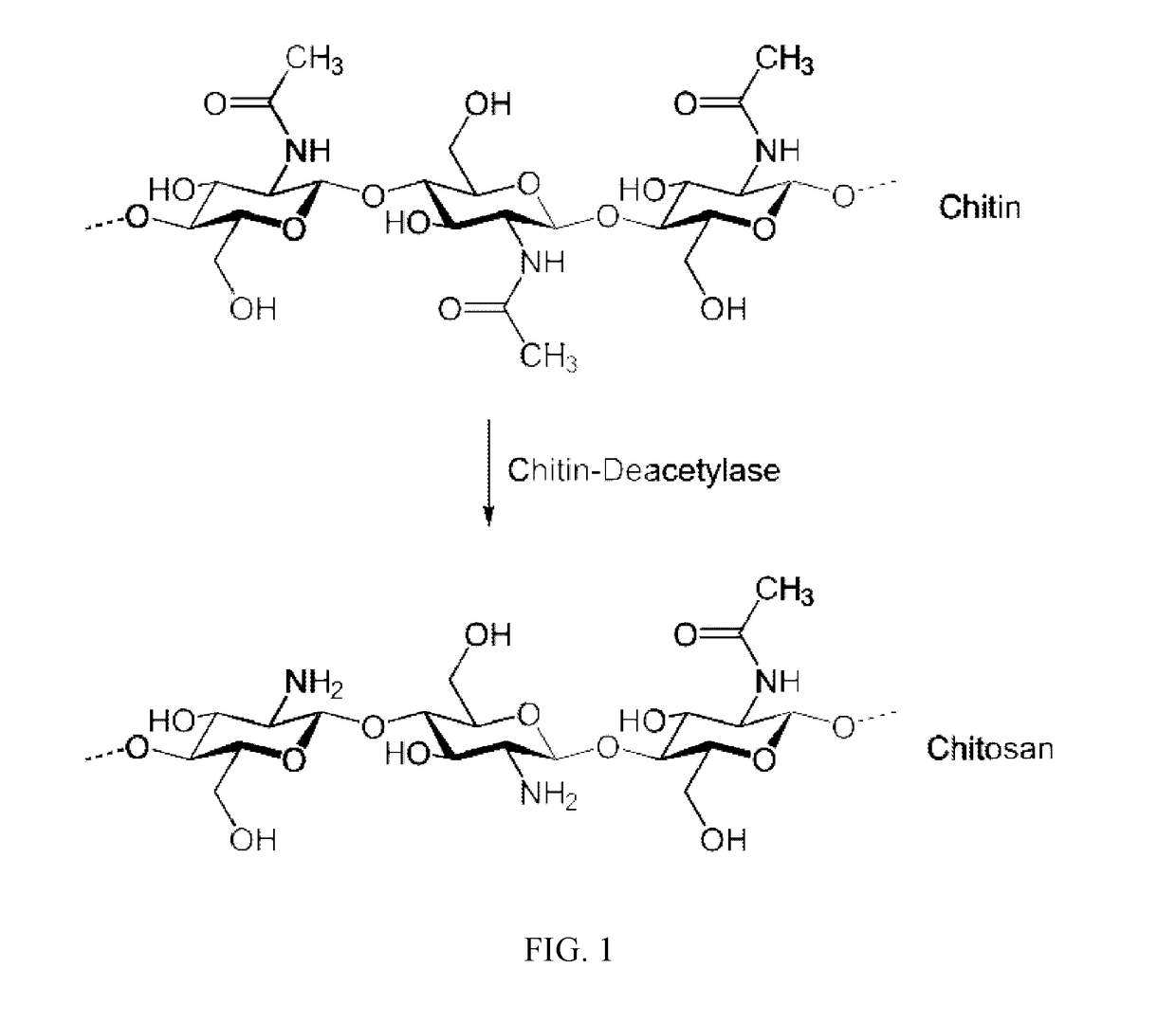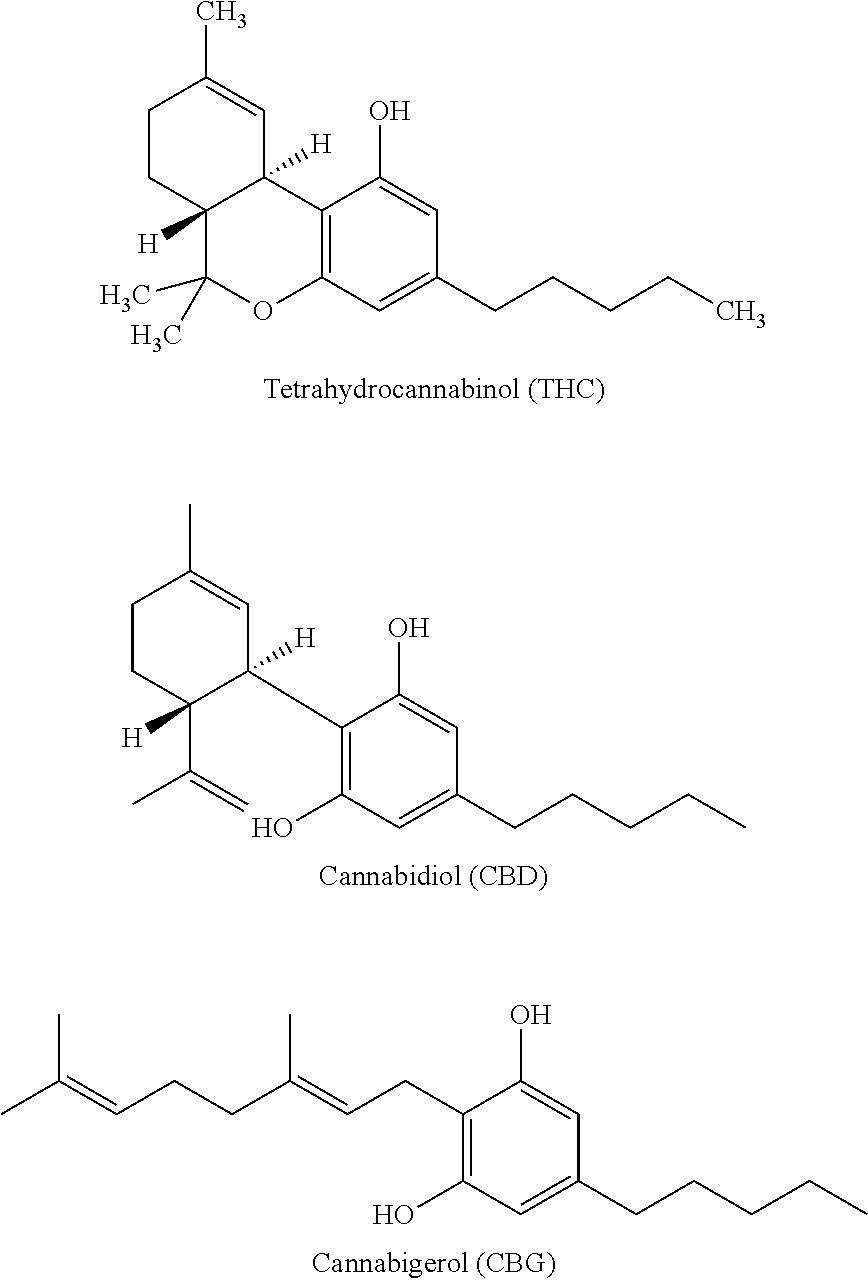Transmucosal cannabinoid formulation including a chitosan excipeint
a cannabinoid and transmucosal technology, applied in the field of trans, can solve the problems of significant reduction in bioavailability and unpleasant smoking, and achieve the effect of improving the transmucosal delivery of cannabinoids
- Summary
- Abstract
- Description
- Claims
- Application Information
AI Technical Summary
Benefits of technology
Problems solved by technology
Method used
Image
Examples
manufacturing example 1
[0030]Heat 4 g dried cannabis to 250 degree F. for 30 minutes to decarboxylate the cannabinoids. Heat 400 g (about 2 cups) of raw unrefined shea butter to melting at approximately 95 degrees F. Add 2 tablespoons of soy lecithin to the shea butter and dissolve. Then add cannabis to shea butter and heat to a temperature of 160 degrees F. for 2 hours. Filter out the cellulosic and other coarse material. Cool the mixture to 100 degrees F. and add 20 mg chitosan per 2 ml and mix thoroughly. Basic formula is complete and can now be either placed into molds by pipette at 2 ml or 5 ml dosing levels or have additional medicinal ingredients added (e.g. essential oils, Ayurvedic compounds, homeopathic remedies, etc.) before being placed into molds and refrigerated yielding a solid molded product.
[0031]In one embodiment the mold yields an uncoated product that easily slides into the body due to the high lipid content and the melting point of the shea butter. In another embodiment, the molded pr...
PUM
| Property | Measurement | Unit |
|---|---|---|
| Fraction | aaaaa | aaaaa |
| Fraction | aaaaa | aaaaa |
| Fraction | aaaaa | aaaaa |
Abstract
Description
Claims
Application Information
 Login to View More
Login to View More - R&D
- Intellectual Property
- Life Sciences
- Materials
- Tech Scout
- Unparalleled Data Quality
- Higher Quality Content
- 60% Fewer Hallucinations
Browse by: Latest US Patents, China's latest patents, Technical Efficacy Thesaurus, Application Domain, Technology Topic, Popular Technical Reports.
© 2025 PatSnap. All rights reserved.Legal|Privacy policy|Modern Slavery Act Transparency Statement|Sitemap|About US| Contact US: help@patsnap.com


